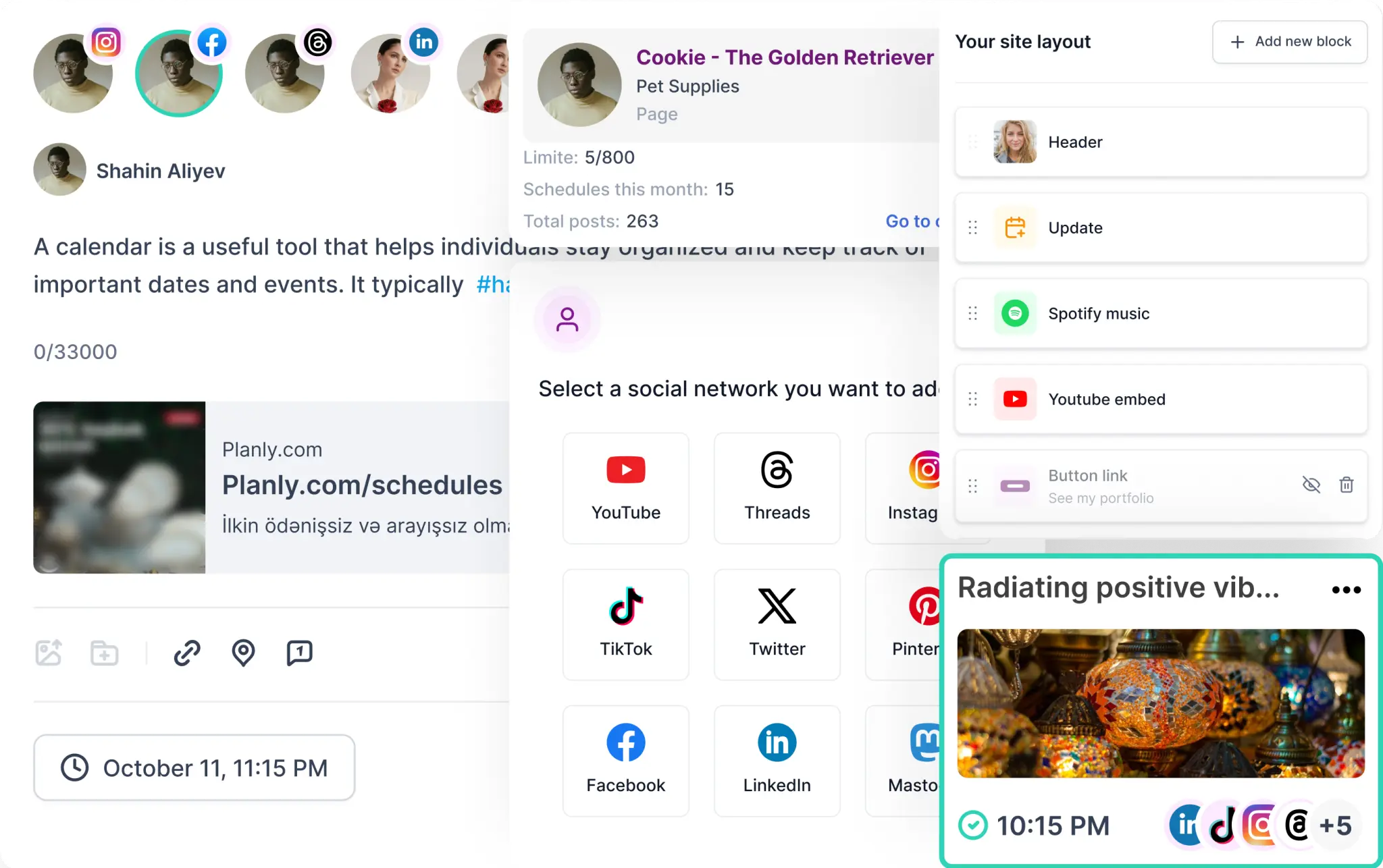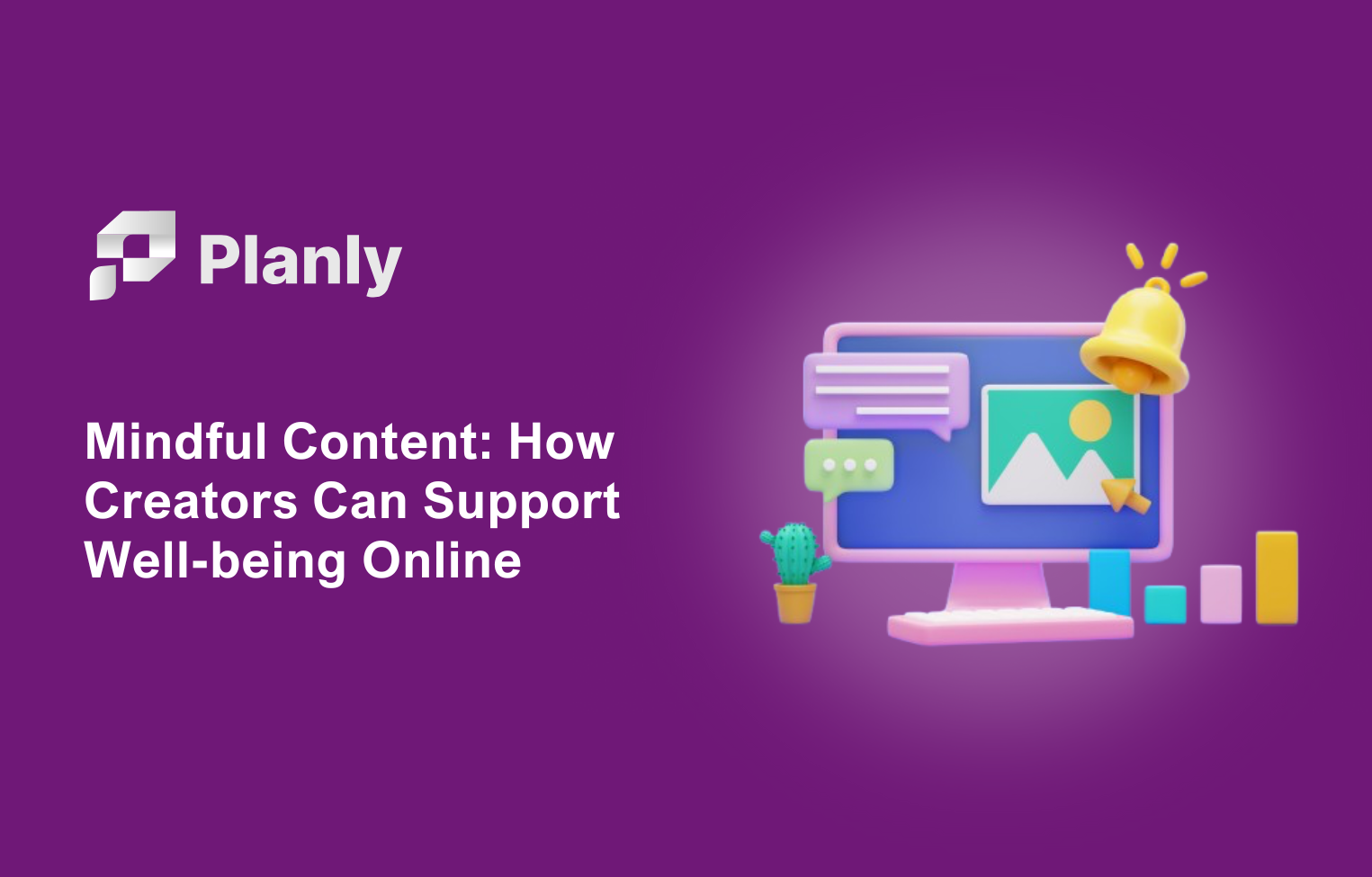In today's digital world, having a strong presence on social media is crucial for businesses and individuals alike. Social media platforms have drastically changed the way we connect, communicate, and share information, making it an essential tool for brand building, customer engagement, and lead generation. However, building an effective social media presence requires a well-defined strategy, compelling content, and consistent efforts. In this comprehensive guide, we will explore the key steps and best practices to help you build a powerful social media presence that drives results and fosters growth.
The Importance of a Strong Social Media Presence
In an era where people spend most of their time on social media platforms, having a strong presence is crucial for businesses and individuals to stay relevant and connect with their target audience. A powerful social media presence helps build brand awareness, enhances credibility, drives website traffic, generates leads, and cultivates a loyal community of followers. It also allows you to listen to customer feedback, respond to inquiries, and gain valuable insights about your audience's preferences and behaviors. With these benefits in mind, it's clear that a strong social media presence is a necessity in today's digital landscape.
Establishing Your Goals and Objectives
Before diving into social media, it's essential to outline your goals and objectives. What do you want to achieve through your social media presence? Do you want to increase brand awareness, boost website traffic, generate leads, drive sales, or improve customer engagement? Clearly defining your goals will help shape your social media strategy and guide your efforts. Make sure your goals are specific, measurable, attainable, relevant, and time-bound (SMART) to track your progress effectively.
Identifying Your Target Audience
Understanding your target audience is paramount to effectively connect and engage with them on social media. Start by creating buyer personas, which are fictional representations of your ideal customers. Consider demographics, psychographics, interests, behaviors, and pain points. Research keywords and hashtags relevant to your industry to know what your target audience is searching for and engaging with. Analyze competitors' social media presence to gain insights into their audience and content strategy. With a clear understanding of your target audience, you can tailor your content to their preferences, needs, and interests.
Choosing the Right Social Media Platforms

Not all social media platforms are created equal, and it's essential to choose the ones that align with your goals and target audience. Each platform has its unique characteristics, user demographics, and content formats. Here's a breakdown of the most popular social media platforms:
- Facebook: With over 2.7 billion monthly active users, Facebook is perfect for businesses targeting a broad audience and focusing on brand awareness, lead generation, and customer engagement.
- Instagram: Known for its visual appeal, Instagram is ideal for businesses with compelling visuals and a younger target audience. Use Instagram for brand building, visual storytelling, and product promotion.
- Twitter: With its fast-paced nature and real-time updates, Twitter is excellent for businesses aiming for real-time customer engagement, industry news sharing, and building thought leadership.
- LinkedIn: LinkedIn is a must for B2B businesses and professionals looking to network, showcase their expertise, and generate leads through content marketing and industry insights.
- Pinterest: If your business has a strong visual component and targets a predominantly female audience, Pinterest can be a valuable platform for driving website traffic, product discovery, and brand inspiration.
Evaluate each platform based on its user base, engagement metrics, and content compatibility to make an informed decision about where to invest your time and efforts.
Creating a Compelling Profile

When it comes to social media, first impressions matter. Your social media profile serves as a digital storefront for your brand, and it's crucial to make it compelling and professional. Here are some tips for creating a compelling profile:
- Choose a Clear and Professional Profile Picture: Use a high-quality profile picture that represents your brand or yourself professionally. Avoid group pictures or blurry images.
- Write an Engaging Bio: Craft a concise and informative bio that describes your brand or yourself. Highlight key aspects, such as your value proposition, unique selling points, or areas of expertise. Use relevant keywords to optimize your bio for search engines.
- Include Contact Information: Make it easy for your audience to contact you by including your website link, email address, or other relevant contact details.
- Customize Your Cover Photo and Background Image: Use visually appealing images that align with your brand and convey your message effectively.
Crafting Engaging and Shareable Content
Compelling content is the backbone of a strong social media presence. Here's how to create engaging and shareable content:
Understand Your Audience's Interests and Pain Points: Tailor your content to address your audience's needs, interests, and pain points. Research popular topics, trends, and frequently asked questions related to your industry.
Use Visuals: Incorporate eye-catching visuals, such as images, videos, infographics, and gifs, to grab your audience's attention and increase shareability.
Tell Stories: Narrative storytelling is a powerful way to engage your audience emotionally. Share compelling stories related to your brand or industry to create a deeper connection with your audience.
Vary Your Content Formats: Experiment with different content formats, such as blog posts, videos, podcasts, live streams, or user-generated content, to keep your audience engaged and interested.
Implementing a Content Calendar
Consistency is key when it comes to social media. Implementing a content calendar helps you stay organized, plan ahead, and ensure a consistent flow of content.
Here's how to create a content calendar:
- Define Your Posting Frequency: Determine how often you want to post on each social media platform. Consider factors such as your audience's preferences, platform algorithms, and available resources.
- Plan Your Content Mix: Decide on the types of content you want to publish, such as curated content, original content, promotions, contests, or user-generated content.
- Choose an Editorial Calendar Tool: Use a digital tool, such as Planly, Hootsuite, or CoSchedule, to create and manage your content calendar seamlessly.
Growing and Engaging Your Followers

Building a social media following requires consistent efforts and active engagement. Here are some tips to grow and engage your followers:
Leverage Hashtags: Use relevant hashtags in your posts to increase visibility and reach a wider audience. Research trending hashtags and industry-specific hashtags to maximize your reach.
Engage in Conversations: Respond to comments, messages, and mentions promptly. Engage in conversations, ask questions, and show genuine interest in your audience's opinions and feedback.
Collaborate with Influencers: Partner with influencers or micro-influencers in your industry to expand your reach, gain credibility, and tap into their existing audience base.
Run Contests and Giveaways: Organize contests or giveaways to encourage user participation, increase brand awareness, and incentivize followers to spread the word about your brand.
Analyzing and Optimizing Your Results
To measure the effectiveness of your social media efforts, it's crucial to track and analyze your results. Here's how to analyze and optimize your social media presence:
Monitor Key Metrics: Keep an eye on metrics such as engagement rate, reach, post performance, click-through rate, and conversions. Use social media analytics tools like Sprout Social, Google Analytics, or Facebook Insights to gather data.
Identify Top-performing Content: Analyze which types of content, topics, or formats perform the best and resonate with your audience. Double down on what works and adjust your strategy for underperforming content.
Refine Your Posting Schedule: Identify the optimal posting times and days for each platform based on your audience's demographics and engagement patterns. Schedule your content accordingly to maximize visibility and reach.
Keep an Eye on Your Competitors: Monitor your competitors' social media strategies to gain insights, discover content gaps, and identify opportunities for improvement.
Staying Up-to-Date with Social Media Trends
The social media landscape is constantly evolving, and it's essential to stay updated with the latest trends and best practices. Here's how to stay ahead of the game:
Follow Industry Experts and Thought Leaders: Keep an eye on thought leaders, industry experts, and social media influencers in your niche. Follow their blogs, podcasts, social media accounts, and attend webinars or conferences to stay updated with the latest trends.
Join Social Media Communities: Engage with like-minded professionals in social media communities and forums. Participate in discussions, ask questions, and share insights to expand your knowledge and network.
Experiment with New Features and Formats: Social media platforms continuously introduce new features and content formats. Be an early adopter and experiment with these to stand out and stay ahead of your competitors.
Tools and Resources for Social Media Success
Here are some valuable tools and resources to help you succeed on social media:
- Planly: An all-in-one social media management platform that helps you schedule posts, analyze performance, engage with your audience, and measure results.
- Canva: A user-friendly graphic design tool that allows you to create stunning visuals for your social media posts, cover photos, and ads.
- Google Analytics: A powerful web analytics tool that helps you track website traffic, conversions, and user behavior from social media.
- Brand24: A digital tool that offers real-time social media listening and monitoring, enabling businesses to track and analyze conversations and mentions about their brand across various social media platforms.
Conclusion
Building a powerful social media presence requires strategic planning, compelling content, consistent efforts, and continuous optimization. By following the steps outlined in this comprehensive guide, you'll be on your way to creating a strong social media presence that drives brand awareness, engagement, and growth. Remember, social media is a marathon, not a sprint, so stay patient, adapt to changes, and keep experimenting and refining your strategy to achieve long-term success.









